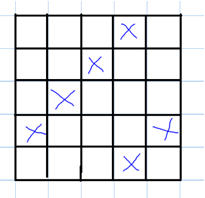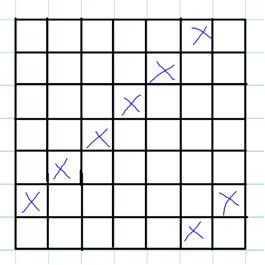Or search by topic
Number and algebra
Geometry and measure
Probability and statistics
Working mathematically
Advanced mathematics
For younger learners
Table Patterns Go Wild!



- Problem
- Getting Started
- Student Solutions
- Teachers' Resources
Rajeev from Fair Field Junior looked at the first row of grids in the problem and said:
For the row of grids where you could only see the top of them, Rajeev said:
Rajeev goes on to say that where the edges are not shown you can still identify the tables:
What can we say about the relationship between the grid size and times table in this first grid, I wonder?
I wonder what else we can say about the last grid? Fantastic work, Rajeev. You've explained your thinking very clearly.
Grace, Libby, Chloe-Anne and Becky from Maldon Primary School looked at the patterns of tables on differently-sized grids. Chloe-Anne pointed out:
$2$x on an even grid will go down in columns and on an odd grid it is like a checkerboard.Becky noticed:
If you have a number and it's that type of number grid eg $7$ by $7$ grid means that you would get the $7$ times table going downwards or eg $5$ by $5$ grid you would get the $5$ times table going downwards in a straight line.So, I think Becky is saying that when you create the pattern of the times table that is the same as the size of the grid, you get a straight line going downwards, or vertically. Well spotted!
Mrs Cresswell's Maths Group from Manor School, Didcot wrote:
We really enjoyed trying the times tables on $10$x$10$ grids and we found a pattern we could describe for all the times tables except the $7$ times table!We noticed that the $9$x table had a diagonal pattern because the grid was one larger than $9$, so the number we coloured in ended up one further back on the row below each time.
We tried this out with other numbers that were one less than the size of the grid, and found that this always makes a diagonal pattern. We drew a picture of the $4$x table on a $5$x$5$ grid and the $6$x table on a $7$x$7$ grid to show you:
 |
 |
We wanted to make a diagonal going the other way, so we tried times tables that were one bigger than the grid. We did the $11$x table on a $10$x$10$ grid, and got a diagonal going down from left to right, because the tens and the units got bigger each time.

Thank you to everyone who submitted solutions to this problem. There's so much to explore here, isn't there?
You may also like
Chocolate
There are three tables in a room with blocks of chocolate on each. Where would be the best place for each child in the class to sit if they came in one at a time?
Four Triangles Puzzle
Cut four triangles from a square as shown in the picture. How many different shapes can you make by fitting the four triangles back together?
Cut it Out
Can you dissect an equilateral triangle into 6 smaller ones? What number of smaller equilateral triangles is it NOT possible to dissect a larger equilateral triangle into?

